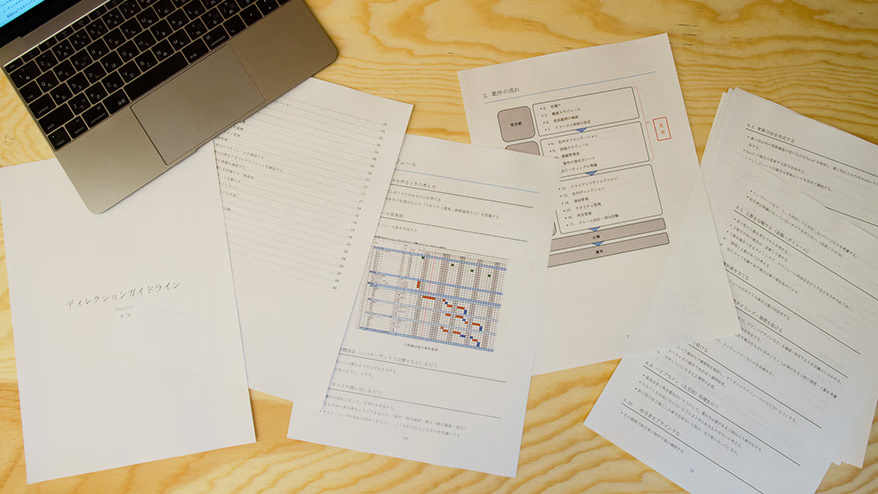Hello, this is Director Nakagawa.
Currently, our direction team's main task is to direct B2B website production services .
Up until now, direction has been done in each director's own way, but we are creating direction guidelines with the idea that we can share everyone's skills.
This time, I would like to talk about the background to the creation of these direction guidelines and some of their contents.
Coding guidelines and direction
At Monosus, we have "coding guidelines" that we created when we launched the coding factory.
The coding guidelines were created with the aim of standardizing quality among coders, and are still in use today, with ongoing updates.
Coding guidelines are basically relatively easy to implement once you have established rules for things like how to write source code or naming conventions for images. However, when it comes to directing an entire project, much of it relies on human skill and there are few things that can be clearly defined as "the right way to do it," so we hadn't established any guidelines until now.
Generalization of Direction
However, as I continued directing several B2B projects, I began to see commonalities, so I decided to compile the rules and guidelines that I should keep in mind into a "direction guidelines."
I would like to introduce some examples of the content that emerged as we were actually formulating the guidelines.
1. The Director's Mindset
The director of the direction team was originally a producer, so he was not completely inexperienced in direction, but directing an entire project requires a broader perspective than directing production only. For example, you always need to think about the balance between cost, time, and quality.
I have written about the fundamental aspects of the direction of the entire project.
2. How to provide direction to customers and within the company
We have compiled skills and know-how necessary for communication, such as the format of materials to prepare for meetings, how to moderate a meeting, and things to be careful of when coordinating with in-house production and sales staff.
3. Progress management and complaint handling
By writing down how to prioritize project progress management and how to respond if a complaint does occur, we are now able to respond as smoothly and safely as possible in emergencies.
By compiling these into guidelines, we can now keep a list of what needs to be prepared in advance when starting a new project, and use them as a guide when we run into difficulties while giving direction.
The direction guidelines still need to be reviewed and improved, so we are not yet ready to show them to you at this time, but we hope to be able to distribute them to you at some point, like the coding guidelines.

